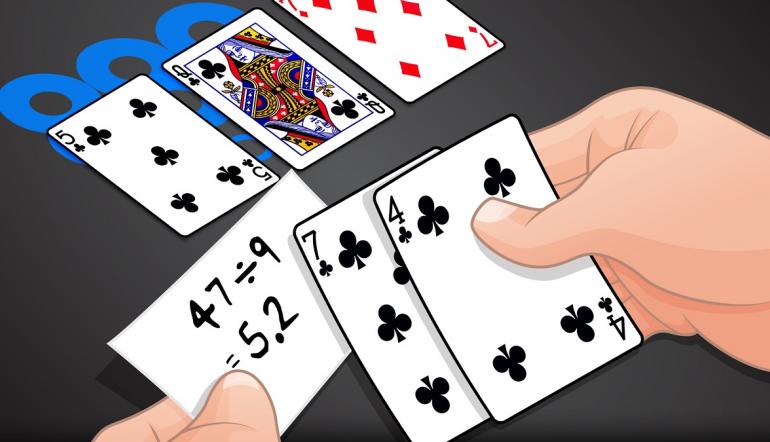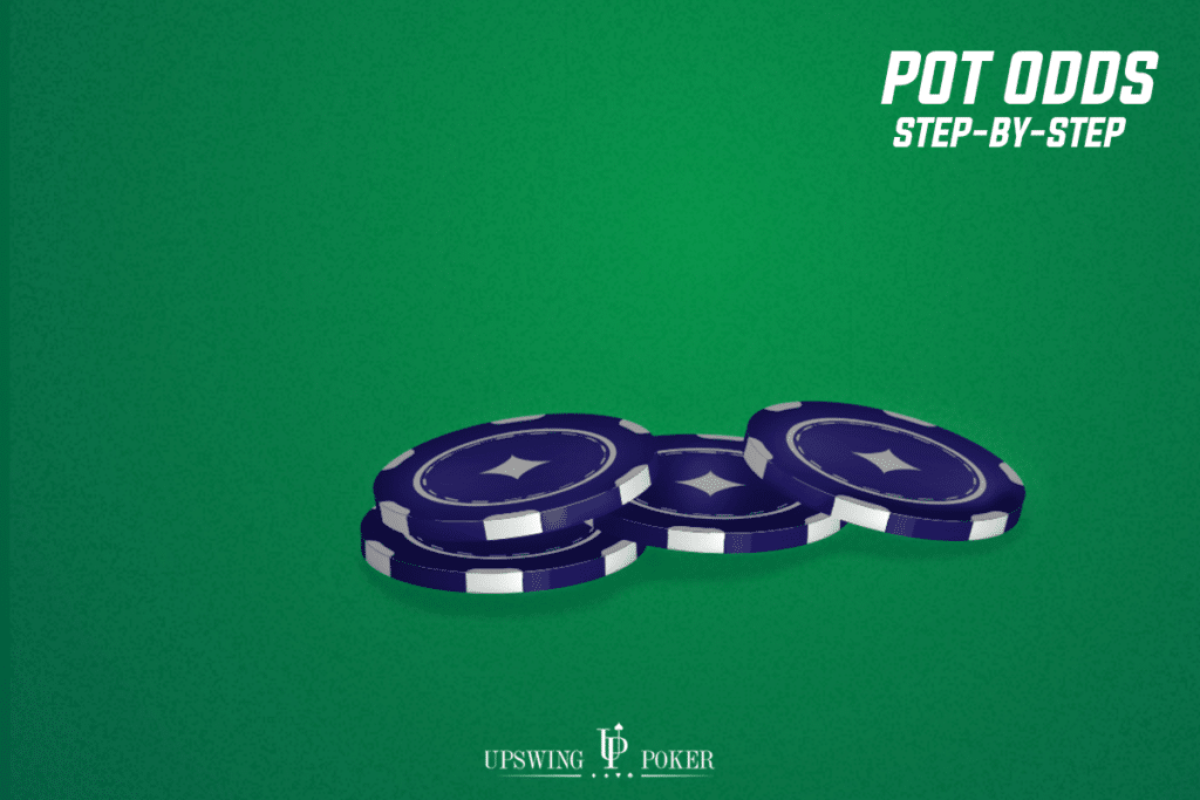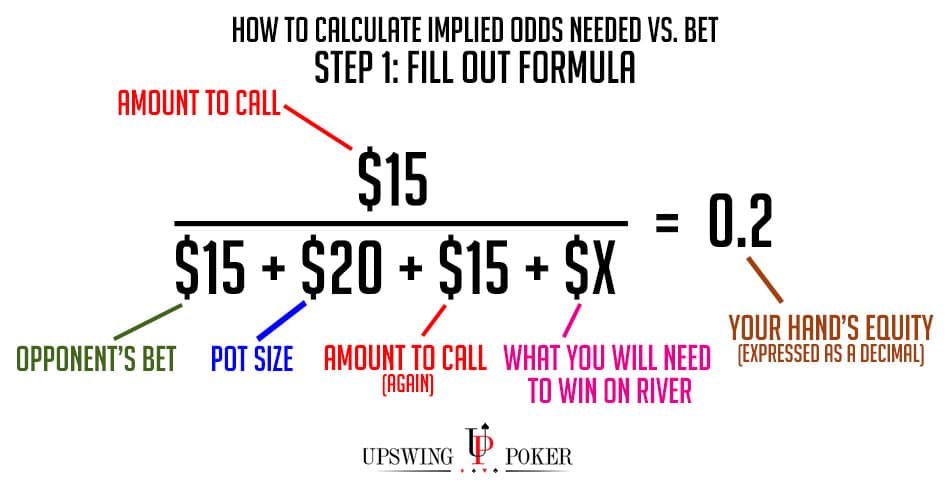How To Calculate Poker Odds In Your Head
Poker Odds - Calculating Hand Odds In Texas Hold'em Poker & Charts. Learning how to properly count your outs and calculate poker odds is a fundamental requirement of Texas Hold'em. While the math used to calculate odds might sound scary and over the head of a new player, it really isn't as hard as it looks. The total value of the pot is now $200. To calculate your pot odds as a percentage, you would divide the amount you have to call to stay in the hand by the total value of the pot, and then multiply.

When playing poker against an opponent or a group of opponents, there are a few trump cards you need to have up your sleeves in order to enhance your chances of walking away with the pot. Or being one of the very lucky players who gets the opportunity to share it depending on the game.
The trump cards we are going to take a look at include calculating poker odds as well as other issues which influence them and are quite important when working them out. These include equity and outs.


We will also be taking a look at the quickest, most efficient ways of working them out when playing a game.
By the time you have reached the end of this article, you will come away with an enhanced understanding of what they are and how to calculate poker odds to improve your gameplay and chances of winning.
The Importance of Outs
In poker, ensuring you have the right combination of cards, otherwise known as hands, is completely essential. Most of the game involves ensuring you make use of the cards in your possession and those dealt afterwards to come up with the best poker hands which come with the best odds as prescribed by your poker hands chart or table.

In order to do so, you need to be able to quickly identify the poker hands you want and the odds of the cards you need to make the hand you want, showing up. Any card which will complete those you have into the hand you need is referred to as an out.
Since there are a set number of suits for each deck (four in total) and a set number of ranks (thirteen in all), it is possible to work out the number of outs you need as well as the probability of them turning up.
One of the best examples is imagining you are currently in possession of four cards of the same suit and following the guidance of your hands chart, need another to make your draw into a flush i.e. a poker hand made up of five cards which all belong to the same suit but which aren’t sequentially ranked.
It’s time to forget all about the cards your opponent has in their possession, and focus on working out the odds of the very card you need making an appearance. In this case, you have 9 outs and will be faced with 4:1 odds of getting the out you need to beat the competition.
The best outs to go for are those which come with the best probabilities and which will turn your draw, the cards you have been dealt, into the strongest possible hand. It is worth noting that there are charts and tables which will enable you work out the outs for each draw and your desired hands. There are also additional pointers which are also really useful when calculating poker odds and we shall take a look at them further on in this article.
Working out Your Pot Odds
Poker is one game which relies on loads of math, statistics and probabilities. All of these factors play a key role in helping you work out what counts the most: getting the best hands suggested by your poker hands chart and placing the best bets. But you needn’t be daunted since it is all really straightforward and can be quite easily worked out.
Pot odds are a great place to begin. They are best defined as the ratio of the quantity contained in the pot against the amount which has to be placed by a player calling a bet during a game. If there is $115 in the pot and you have to bet $10 to call your opponent’s bet, calculating these poker odds will enable you to know if placing that bet is a good idea.
So, we start with the ratio: $115: $10
And we aren’t done yet, since that’s just the beginning.
Our next step involves taking the total of both the amount in the pot and the bet which will give us $125.
How To Calculate Poker Odds In Your Head Position
Next, we divide the bet by that total to obtain a decimal:
10/125 = 0.125
And if you prefer working with percentages, all you have to do is multiply that result by 100:

0.125 * 100 = 12.5%.
Therefore, your pot odds which are your probability of winning the pot should you call the bet are the above results.
Make sure you pay close attention to the amount in the pot at all times during a game as doing so will enable you to be able to calculate your poker pot odds as promptly as possible.
To Bet or Not to Bet
Once you have calculated your poker pot odds and worked out all you need to know about your outs, it’s time to decide whether you should place a bet or not.
From the previous subsection on outs, we assumed that the hand we needed to make was a flush, and that four cards were already available, meaning we needed just one to show up and create just what we needed. We were also able to work out the fact that we had odds of 4:1 of that card turning up. In other words, a 20% chance.
The little bit of math needed to obtain the percentage is as follows: 1/4+1 * 100 = 1/5 *100 = 20%.
To know whether to proceed with that bet, all we have to do is compare the above results with our pot odds. If you place a $10 dollar bet with the current odds, you would expect to pocket $40. And when that is subtracted from the pot’s new total once you have placed your bet, you would have $85.
That certainly makes it worth your while.
The short cut to working it all out is ensuring your odds are greater than the pot odds. That will always give you the green light to proceed with placing the bet. The reverse, on the other hand, is a red flag and it may be best to avoid placing the bet.
However, it is worth recalling that poker is still very much a game of chance and in spite of your meticulous calculations and carefully laid plans, things might not turn out the way you expect.
Working with Equity
Anyone might be forgiven for thinking that equity is some fancy legal term. But it’s all about poker here so if you wagered on it being a more mathematical term, you would certainly win your bet. That is because equity is the chance or probability you have of winning the round before showdown occurs.
It is never stable and changes throughout the rounds of a game. In addition to being influenced by the stage of the game, it is also affected by the number of outs.
One way of working it out is using an odds calculator or even memorizing a poker hands chart as these are widely available. However, when playing online poker, the ability to make really quick calculations which are accurate becomes really important.
So, what most players need at that point in time is a highly efficient means of working out those poker hands odds.
The rule of 2 and the rule of 4 are especially handy in this regard. Even though they do not provide exact values, they are pretty accurate and will provide you with a good idea of where things stand.
The former means that in the round before showdown, where there is just one card left to be drawn, i.e. the river, it is possible to calculate the odds of getting an out by doubling the number of outs.
How To Calculate Poker Odds In Your Head Against
If we take the example provided above where the number of outs required for a flush hand is 9, calculating those odds for that stage of a poker game will yield 18%. Which is pretty close to the previously calculated poker odds of 20%.
To work out the odds of getting an out when there are two more cards to be drawn, all you have to do is multiply those outs by four.
The rule of 2 and the rule of 4 are the most efficient means of calculating your percentage poker odds of completing a draw. Some players prefer to tweak them for a little more accuracy but they are pretty fine on their own and as long as you know your pot odds, you will be able to know whether to call a bet or to fold it.